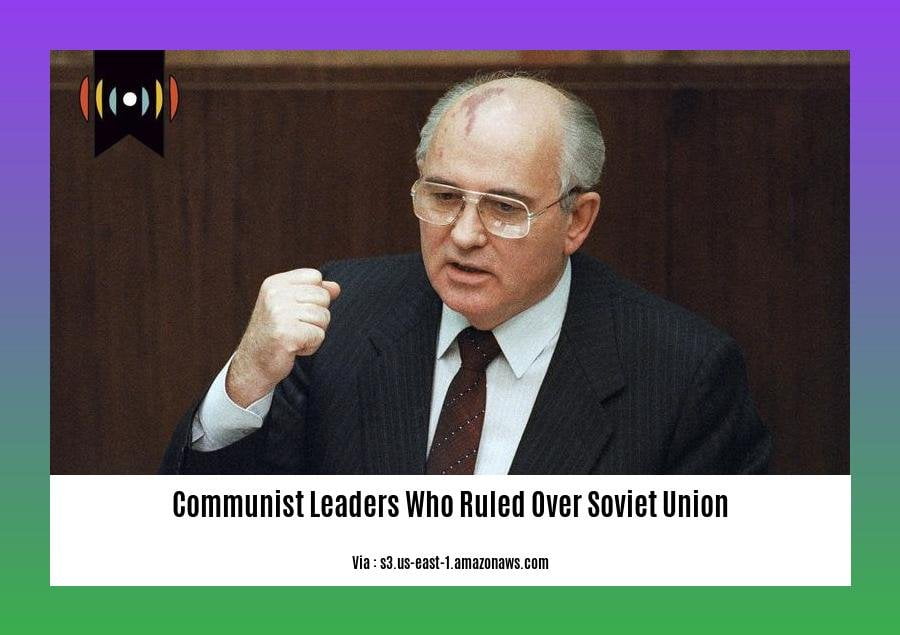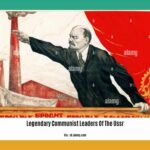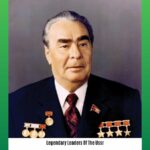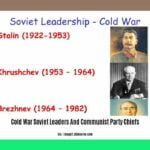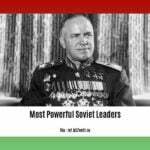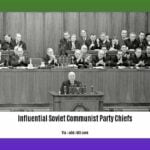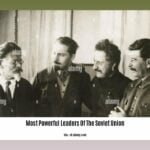Delve into the captivating history of the Soviet Union through an in-depth analysis of its prominent leaders: Joseph Stalin, Vladimir Lenin, Nikita Khrushchev, and Mikhail Gorbachev. This article provides an exclusive glimpse into their policies, decisions, and the profound impact they had on shaping the nation’s destiny. Communist Leaders Who Ruled Over the Soviet Union: An Analysis of Their Policies, Decisions, and Impact.
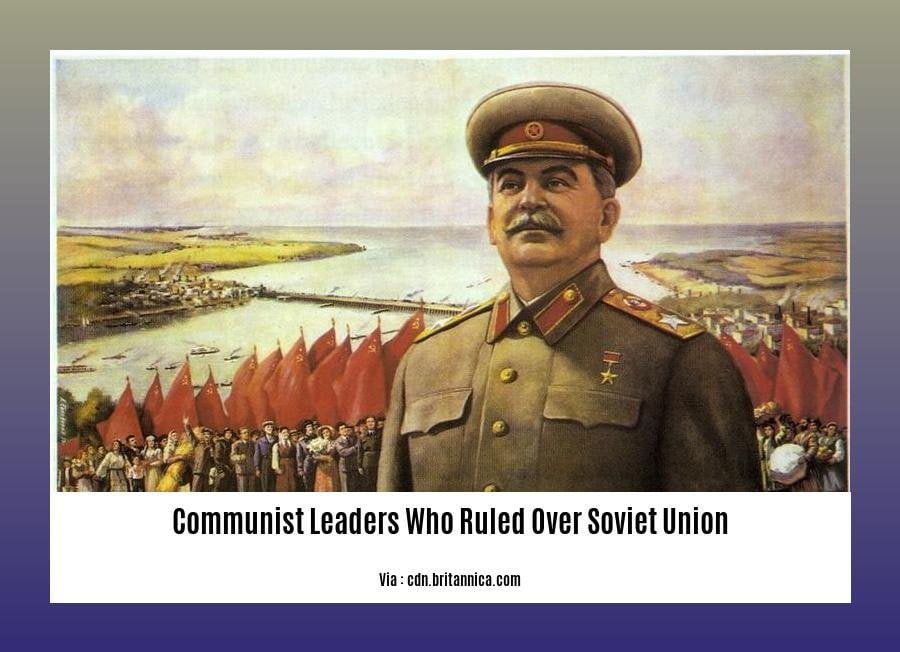
Key Takeaways:
- Vladimir Lenin established the Soviet Union and implemented the New Economic Policy.
- Joseph Stalin’s authoritarian rule transformed the Soviet Union through collectivization and industrialization (five-year plans).
- Nikita Khrushchev’s de-Stalinization and peaceful coexistence with the West marked a shift in Soviet policy.
- Leonid Brezhnev’s “era of stagnation” characterized by economic decline and political conservatism.
- Mikhail Gorbachev’s reforms (perestroika and glasnost) led to the dissolution of the Soviet Union.
Communist Leaders Who Ruled Over the Soviet Union
Let’s delve into the history and impact of the communist leaders who ruled over the Soviet Union:
Vladimir Lenin: The Revolutionary
Lenin, the mastermind behind the Bolshevik Revolution, laid the groundwork for the Soviet Union. His Marxist-Leninist ideology shaped the USSR’s political and economic system, leaving an enduring legacy.
Joseph Stalin: The Iron-Fisted Dictator
Stalin’s reign marked a period of brutal repression, collectivization, and rapid industrialization. While he modernized the country, his authoritarian rule and purges took a heavy toll on the nation.
Nikita Khrushchev: De-Stalinization and the Thaw
Khrushchev initiated a process of de-Stalinization and attempted to improve relations with the West. His era witnessed space exploration triumphs but also the Cuban Missile Crisis.
Leonid Brezhnev: Stagnation and Conservatism
Brezhnev’s leadership ushered in an era of economic stagnation and political conservatism. Despite his efforts to strengthen the military, the country faced growing economic challenges.
Mikhail Gorbachev: Perestroika and Glasnost
Gorbachev’s reforms of perestroika and glasnost aimed to revitalize the Soviet economy and increase political transparency. His policies ultimately led to the collapse of the Soviet Union.
Assessing Their Impact
The communist leaders who ruled over the Soviet Union played significant roles in shaping its history. Their decisions had far-reaching consequences, affecting both their own citizens and the global political landscape.
A Legacy that Echoes
Their legacies continue to be debated and analyzed, offering insights into the complexities of communism and the enduring impact of the Soviet experiment on the world stage.
For the most powerful rulers who controlled the fates of millions, explore our comprehensive list of the most powerful soviet leaders. Learn about the influential figures who guided the influential soviet communist party chiefs and shaped the landscape of the Union of Soviet Socialist Republics, the legendary leaders of the ussr who left an indelible mark on the world.
J’s Impact on the Soviet Union
Joseph Stalin was the second leader of the Soviet Union, ruling from 1924 to 1953. During his time in power, he implemented a series of policies that had a profound impact on the country, both positive and negative.
Policies and Impact
Collectivization of Agriculture: Stalin’s collectivization of agriculture aimed to consolidate individual farms into large, state-run collectives. This policy was intended to increase agricultural productivity and provide a steady food supply for the growing urban population. However, it led to widespread famine and peasant resistance.
Industrialization: Stalin prioritized heavy industry, investing heavily in factories and machinery. This rapid industrialization transformed the Soviet Union into a major industrial power but came at the cost of consumer goods and living standards for the population.
Great Purge: In the 1930s, Stalin launched the Great Purge, a campaign of political repression that targeted perceived enemies of the state. Millions of people were arrested, imprisoned, or executed, including many loyal party members.
Key Takeaways:
- Stalin’s policies had a transformative impact on the Soviet Union.
- Collectivization and industrialization led to significant economic growth but also caused hardship.
- The Great Purge decimated the political and intellectual elite of the country.
Citation:
outstanding Leaders of the Soviet Union: Their Impact on the Nation’s Trajectory
The Soviet Union, a nation born out of revolution, witnessed the rise and fall of several influential leaders who left an indelible mark on its history. Each leader brought their own unique vision, policies, and decisions, shaping the nation’s trajectory in profound ways.
Vladimir Lenin: The Revolutionary Pioneer
Lenin, the founder of the Soviet Union, played a pivotal role in leading the Bolshevik Revolution and establishing the world’s first communist state. His policies, heavily influenced by Marxist ideology, aimed to create a socialist society based on the principles of equality and workers’ control.
Joseph Stalin: The Iron-Fisted Dictator
Stalin, Lenin’s successor, ruled the Soviet Union with an iron fist for nearly three decades. His policies, marked by brutal collectivization, rapid industrialization, and the Great Purge, transformed the nation into a powerful industrial force while also leading to widespread suffering and political repression.
Nikita Khrushchev: Unveiling Stalin’s Legacy
Khrushchev, who came to power after Stalin’s death, initiated a period known as de-Stalinization. He denounced Stalin’s crimes, eased political repression, and attempted to improve relations with the West. His policies laid the groundwork for a less oppressive and more open Soviet society.
Leonid Brezhnev: The Era of Stagnation
Brezhnev’s long reign marked a period of relative stability and economic growth, known as the ‘Era of Stagnation.’ However, his policies also led to growing corruption, economic inefficiency, and a decline in Soviet innovation.
Mikhail Gorbachev: The Final Chapter
Gorbachev, the last leader of the Soviet Union, introduced ambitious reforms known as perestroika (restructuring) and glasnost (openness). These reforms aimed to modernize the Soviet economy and political system, but ultimately led to the dissolution of the Soviet Union in 1991.
Key Takeaways:
- The Soviet Union was shaped by a series of influential leaders, each with their own unique ideologies and policies.
- Lenin’s Marxist ideals laid the foundation for the Soviet state.
- Stalin’s brutal dictatorship transformed the Soviet Union into an industrial powerhouse but came at a great cost.
- Khrushchev’s de-Stalinization policies helped to ease political repression.
- Brezhnev’s era saw economic growth but also stagnation and corruption.
- Gorbachev’s reforms ultimately led to the collapse of the Soviet Union.
Citation:
Soviet Leaders: Shaping the Course of a Nation
The Soviet Union, born from the ashes of the Russian Empire, embarked on a transformative journey under the iron grip of communist leaders. From Lenin’s revolutionary fervor to Gorbachev’s ill-fated reforms, these leaders left an indelible mark on the nation’s history.
Key Takeaways:
- Lenin: Founded the Soviet Union, establishing Marxist principles.
- Stalin: Collectivized agriculture, industrialized the nation, and ruled with an iron fist.
- Khrushchev: Initiated de-Stalinization and eased tensions with the West.
- Brezhnev: Presided over a period of economic stagnation and dissent suppression.
- Gorbachev: Introduced perestroika and glasnost, ultimately leading to the Soviet Union’s dissolution.
Lenin: The architect of the Soviet state, Lenin sowed the seeds of a socialist revolution. His Bolshevik Party seized power in 1917, establishing the Soviet Union as the first communist state.
Stalin: Inheriting power after Lenin’s death, Stalin transformed the Soviet Union into an industrial giant through forced collectivization and five-year plans. However, his ruthless Great Purge left millions dead or imprisoned.
Khrushchev: Khrushchev denounced Stalin’s crimes, easing tensions with the West and promoting “peaceful coexistence.” But the Cuban Missile Crisis and his agricultural reforms proved disastrous.
Brezhnev: Brezhnev’s lengthy rule marked an era of economic stagnation and political conservatism. Dissent was crushed, and the Soviet Union’s international influence waned.
Gorbachev: The last Soviet leader, Gorbachev attempted to revitalize the stagnant economy through his reform policies. However, these reforms inadvertently weakened the Soviet state, leading to its eventual collapse in 1991.
The legacy of these leaders is complex and contested. While their policies shaped the destiny of millions, their authoritarian rule and suppression of dissent left a lasting scar on the nation’s history.
Citation:
Leaders Throughout The History Of The Soviet Union. (n.d.). [Website]. Retrieved from
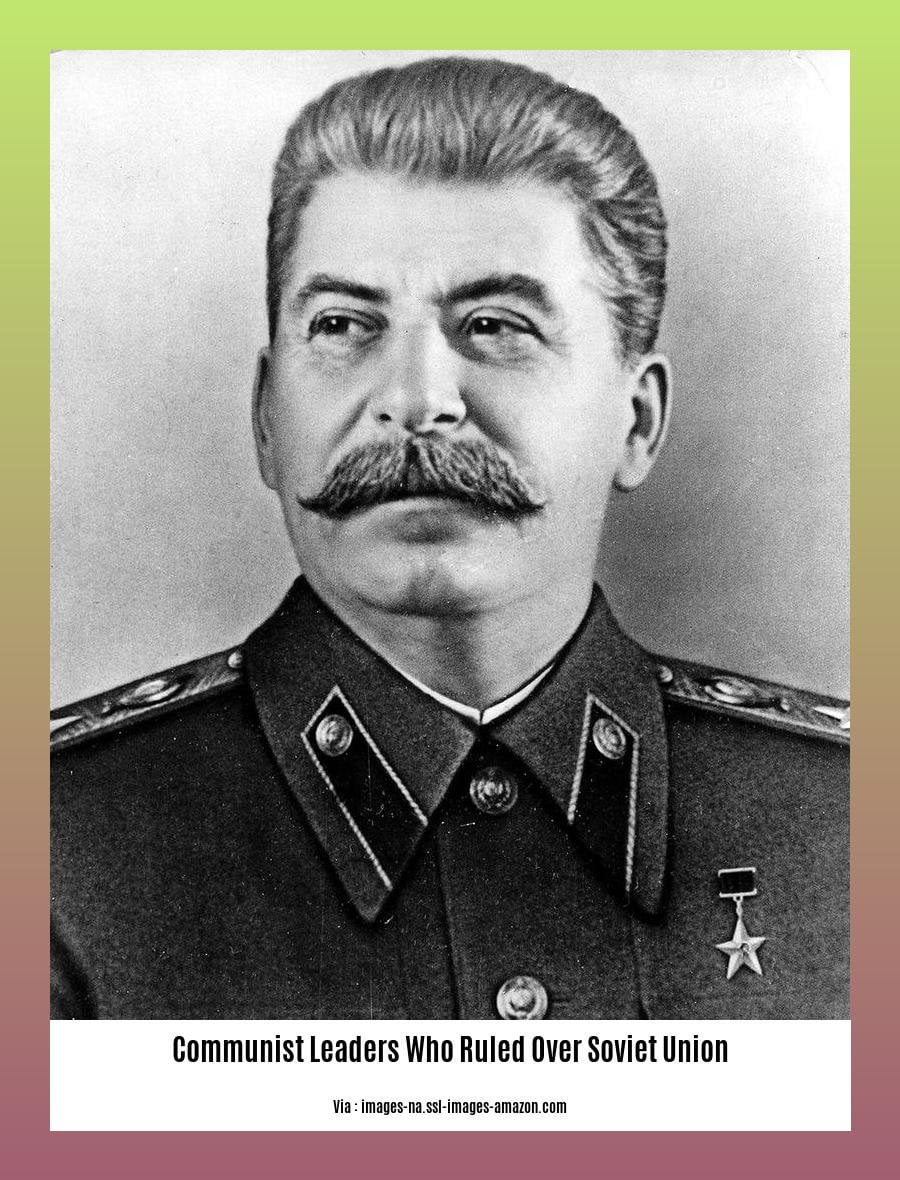
FAQ
Q1: Who was the longest-serving leader of the Soviet Union?
A1: Joseph Stalin, who ruled for 29 years from 1924 to 1953.
Q2: Who was the founder of the Russian Communist Party and the first Soviet head of state?
A2: Vladimir Lenin.
Q3: Who implemented de-Stalinization measures and promoted peaceful coexistence with the West?
A3: Nikita Khrushchev.
Q4: Who led the Soviet Union during the period of “stagnation”?
A4: Leonid Brezhnev.
Q5: Who implemented perestroika (restructuring) and glasnost (openness) policies, leading to the collapse of the Soviet Union?
A5: Mikhail Gorbachev.
- Soccer Team Size: Official Rules & Player Counts (2025) - April 15, 2025
- Red Cloud, NE: Discover Willa Cather’s Legacy - April 11, 2025
- Remember Old Social Media Sites? Their Rise and Fall - April 11, 2025
